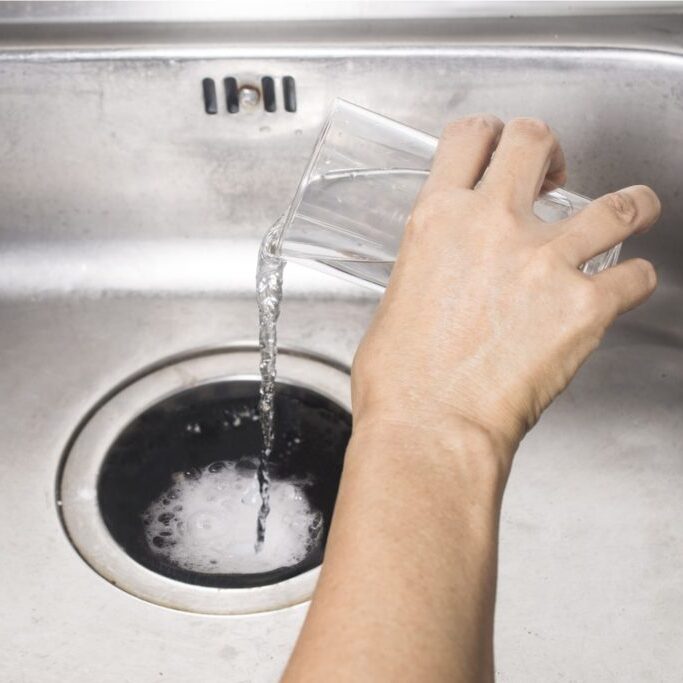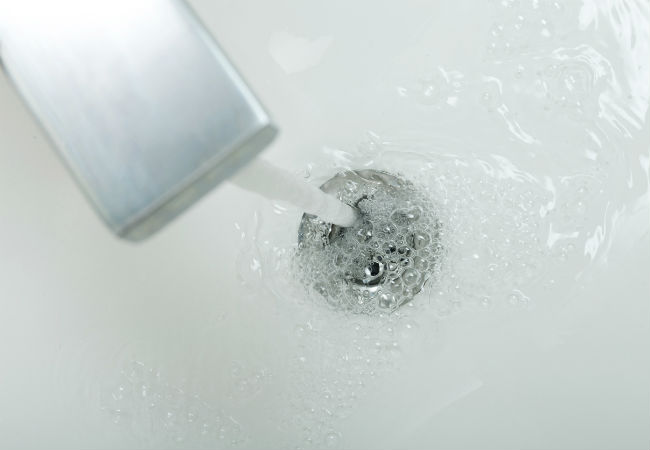Clear Instructions To Repair A Slow-Draining Sink
Clear Instructions To Repair A Slow-Draining Sink
Blog Article
Listed here further down you'll find additional brilliant additional info pertaining to How to Fix a Slow Draining Sink.

Intro
We have actually all been there: You're cleaning your teeth or cleaning your hands, and you observe the water pooling in the sink. Instead of swiftly swirling away, it lingers, transforming your once-refreshing early morning routine into a miniature overload scene. A slow-draining sink isn't simply irritating; it's often a sign of bigger plumbing problems hiding under the surface area. The bright side is that a lot of slow-draining sinks can be repaired with a little expertise, a few fundamental devices, and some persistence. All set to tackle this task head-on? Let's roll up our sleeves and dive right in.
Recognizing the Causes of a Slow-Draining Sink
Prior to you start poking around in your pipelines, it assists to know what may be triggering the stagnation. Comprehending the origin makes it easier to choose the ideal repair.
Devices and Materials You'll Need
The right tools make all the distinction. Luckily, you will not need a completely equipped plumbing technician's van to get the job done.
Step-by-Step Guide to Repairing a Slow-Draining Sink
Currently, allow's enter the nitty-gritty. This step-by-step process will certainly direct you via easy methods to restore your sink's drain.
Action 1: Remove and Tidy the Stopper
Often, the stopper (that tiny plug you push down to block water) is the first offender. Remove it very carefully and wipe any hair or gunk entraped around its base. Rinse it thoroughly before putting it back in position.
Action 2: Make Use Of a Plunger to Dislodge Debris
Got that bettor ready? Setting it over the drain and give it a few firm pumps. The concept is to create suction that can loosen up any obstruction. If you see little bits of particles floating up, you get on the ideal track.
Action 3: Attempt a Drain Snake or Wire Wall Mount
If the bettor does not work, it's time to bring out the drainpipe snake. Carefully feed it right into the drain and twist as you go. You might really feel some resistance-- that's likely the clog. Keep twisting and drawing till you remove the obstruction. If you do not have a drainpipe serpent, a straightened cable wall mount can operate in a pinch.
Tip 4: Use a Do It Yourself Drainpipe Cleanser
An all-natural cleaner made from cooking soda and vinegar can break down residual grime. Put half a mug of cooking soda right into the drainpipe, adhered to by half a mug of vinegar. Let it fizz for around 15 mins, after that flush with warm water. This chain reaction frequently does marvels for small clogs.
Tip 5: Reassemble and Evaluate the Sink
Placed every little thing back together and run the faucet. Does the water now swirl down the drain at a decent speed? If yes, provide yourself a pat on the back. Otherwise, do not misery-- there are still a couple of even more dress up your sleeve.
Crucial Devices for DIY Repairs
A plunger is your go-to starting point. A little, sink-sized bettor produces suction that can displace minor obstructions. For more consistent obstructions, a drainpipe serpent (sometimes called a plumbing technician's auger) works wonders. A set of handwear covers, a flashlight, and maybe a pair of safety goggles are additionally helpful.
Advised Cleansing Solutions
Mild meal soap and warm water can assist break down oily build-up. A combination of cooking soda and vinegar is a reliable home remedy, and chemical cleaners use an even more green approach. Keep chemical drainpipe cleansers as a last resort, as they can be severe on your pipelines.
Common Wrongdoers Behind Slow Drainage
So, what's obstructing things up? Generally, it's a mixture of daily particles-- think hair, soap scum, toothpaste residue, and remaining food fragments. With time, these tiny bits gather and hold on to the pipeline walls, slowly tightening the flow and making it harder for water to pass through. In many cases, mineral deposits from hard water can also include in the gunk, developing the excellent storm for stubborn obstructions.
When is it Time to Do Something About It?
If you discover the water draining slower than normal, it's a good concept to intervene faster rather than later. Waiting as well long can cause finish blockages, undesirable odors, or perhaps pipe damages. If the water takes greater than a couple of seconds to remove after switching off the faucet, consider it a warning and prepare yourself to put on your do it yourself hat.
Safety First: Safety Measures and Preparations
Before you launch into unclogging mode, think of safety and security. You're taking care of possibly filthy water and debris, so slip on a pair of handwear covers. If you're utilizing chemical cleaners, make certain the room is well-ventilated and follow the directions on the label.
Protective Gear and Work Area Setup
Lay down some old towels or cloths around the sink area to catch sprinkles. Remove any type of things that could enter your method, like soap dispensers or toothbrush holders. Ensure you have good illumination-- get a flashlight if needed.
Different Techniques for Stubborn Clogs
Not all clogs are developed equal. If your sink still refuses to cooperate, take into consideration these alternative services.
Baking Soda and Vinegar Approach
We currently discussed this, however it deserves keeping in mind once more. This mild, environmentally friendly technique is much safer than chemical cleansers and frequently quite effective.
Enzymatic Drain Cleaners
Enzyme-based cleansers make use of natural bacteria to absorb raw material. They're a superb selection if you're seeking to avoid rough chemicals. Just remember, they may take a bit longer to function their magic.
Chemical Drainpipe Cleansers: Advantages And Disadvantages
Chemical cleaners can blast with challenging clogs quick, yet they're not without downsides. They can generate warmth and fumes, damages pipelines if used exceedingly, and posture environmental dangers. Utilize them moderately, and constantly comply with the directions meticulously.
Preventive Measures to Keep Your Sink Flowing
Avoidance is the best treatment. By embracing a couple of straightforward routines, you can maintain your sink from slowing down to begin with.
Normal Cleaning Up Routines
Clean down the sink container and component location routinely. Get rid of hair or food particles before they have a possibility to wash down the drain.
Staying Clear Of Harmful Materials Down The Tubes
Hesitate before dumping coffee premises, oil, or coarse veggie scraps down the sink. These culprits cling to pipe wall surfaces, creating obstructions with time.
Routine Maintenance Checks
Set up a fast regular monthly examination. Run warm water via the sink for a few minutes, taking notice of the flow. If it appears slow-moving, act fast before it comes to be a full-blown blockage.
When to Call an Expert Plumbing Professional
Occasionally, no matter just how difficult you try, that clog simply will not budge. That's when it's time to generate the pros.
Indicators That Suggest an Extra Major Issue
If your sink drains pipes slowly despite several efforts, or if you discover water supporting in other fixtures (like your shower or bathroom), you might have a much more serious plumbing issue lurking deeper in the system.
Stabilizing Do It Yourself Initiatives with Specialist Assistance
While DIY can conserve you money and offer a feeling of achievement, there's no embarassment in calling a professional. An expert plumbing professional can evaluate your entire plumbing configuration, ensuring there's no underlying damage or long-term trouble that can cost you extra down the road.
Comparing Expenses and Long-Term Solutions
Prior to choosing, think about the big picture. An affordable, quick fix may solve the issue temporarily, yet investing in a much more irreversible service might conserve you money and stress and anxiety in the long run.
Considering the Expenses of DIY vs. Specialist Fixes
Do it yourself solutions often cost little more than the price of a plunger or a bottle of cooking soda. Expert services, on the other hand, featured a price tag but may stop repeated issues and costly repairs later on.
Purchasing Quality Fixtures and Upgrades
If your sink's layout contributes to constant clogs, it could be worth upgrading to higher-quality components or changing the pipes layout. Consider this a financial investment in your home's performance and convenience.
Conclusion
A slow-draining sink can seem like a small inflammation, but it's commonly a sign that your plumbing needs a little TLC. By recognizing the root causes, employing the right devices and strategies, and committing to straightforward safety nets, you can maintain your sink flowing freely. And when all else falls short, never think twice to call a professional-- your home's pipes is worth the financial investment in care and upkeep.
Three Common Ways to Fix a Slow Drain
Baking Soda Method
Boil a full pot of water. Measure out cup of baking soda and pour it down the drain. Then take cup of the magical cleansing substance known as white vinegar and drop that down there too. Allow the mixture to fizz in the drain for five minutes as the vinegar and baking soda combine. Now dump in that whole pot of boiling water. This combination of cleaning substances should clear out anything that is causing your sink to drain slowly. If it doesn t...
Zip-It
If the baking soda method doesn t clear out your drain, it may be because a significant amount of hair and/or other debris has collected there and you need to remove it. Purchase a Zip-It tool at any home improvement or hardware store and insert it into your drain. It will catch any collected hair or debris that s blocking the flow of water. Pull it out. If it s got a big clump of hair, etc. on the end, you ve probably got your culprit.
Drain Cleaner
If these methods don t work, there is the standard drain cleaner that you can also buy in a hardware store or even your local grocery store. It s better if you can use a household solution, but these drain cleaners often work in a pinch. They re very simple to use. You generally just dump them in your drain and wait. If even this method is not effective, it may be time to call the plumber.
https://www.mrrooter.com/oneida/about-us/blog/2017/july/three-common-ways-to-fix-a-slow-drain/

As a devoted reader about Three Common Ways to Fix a Slow Drain, I assumed sharing that excerpt was really useful. Sharing is nice. Who knows, you may be helping someone out. Thank you for being here. Return soon.
Call Today Report this page